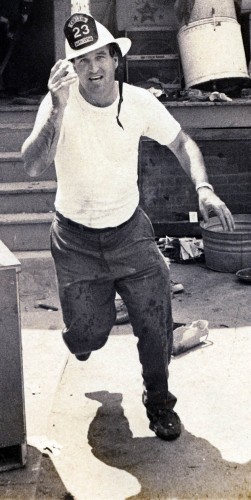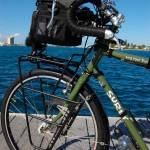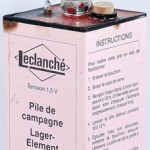A buddy of mine had a heart attack last week. (We’ll call him Bill to protect his privacy.) A friend gave me the details. (We’ll call her Sally to protect her. You’ll see why she NEEDS protection later.)
 Bill, 47, complained of being tired, feeling lousy and having some minor chest pains on Monday and Tuesday. The pain wasn’t radiating down his arms in the classic symptom of a heart attack, so he went to a regular doc instead of the emergency room.
Bill, 47, complained of being tired, feeling lousy and having some minor chest pains on Monday and Tuesday. The pain wasn’t radiating down his arms in the classic symptom of a heart attack, so he went to a regular doc instead of the emergency room.
His doctor sent him to a cardiologist for more tests.
During the test he had a full-blown heart attack
By the time everything was done, it was discovered that Bill’s left descending artery had a 99% blockage and another was at 80%. The next day more tests found that he’d had a “silent” heart attack in the past two months and that two more arteries were blocked and there might be problems with two others. He ended up with six stents.
All in all, things turned out OK.
“I’m running around with a six-pack, legally,” Bill quipped. “I feel great — a little tired, but it’s good to be alive.” He was released a day early and is up and around, already driving short distances and eating low-fat foods.
Heart attack and stroke good advice
Sally passed on these good pieces of advice from her son, who is a paramedic-firefighter:
- Even if you think it’s “just indigestion or heartburn,” get it checked out! Insurance covers ER!
- Heart attacks don’t just hit old men. Bill is 47.
- Chest pains MEAN something and a heart attack doesn’t always follow the classic symptoms: persistent fatigue, tightness in chest, radiating pain in jaw or shoulder or down the arm and sweating or flushing. If someone around you is rubbing or grabbing at their chest and sweating, or suddenly acts dazed and confused and out of character, get busy. Acting quickly means someone might live because of you.
- Call 911 (know your street address if you’re using a cell phone) – then give the person aspirin. Two crushed, NONCOATED, full-strength aspirin under the tongue can save someone’s life. Stick two in your wallet and you’ll always have them at hand.
- This works for stroke victims, too. (Symptoms for stroke: victim can’t smile, lift an arm over their head, or speak in a complete sentence.) The aspirin won’t do any harm if it’s not a heart attack or stroke. And don’t try to get them to swallow them with water; this can cause choking. Remember: noncoated generic aspirin.
Toilet plungers and CPR
In another message (and this will show you why we’re calling her Sally instead of her real name) she added, “I have read that an old-fashioned toilet plunger also works very well as a chest massage especially on large people on whom chest compression is difficult….but who the hell has those except restaurants — and maybe private homes?”
 I have quite the reputation for carrying the kitchen sink on my bike, so I replied, “You’ve never seen my folding toilet plunger? It works like my Click-Stand. I don’t carry it anymore since I found a portable defib unit on ebay cheap.
I have quite the reputation for carrying the kitchen sink on my bike, so I replied, “You’ve never seen my folding toilet plunger? It works like my Click-Stand. I don’t carry it anymore since I found a portable defib unit on ebay cheap.
If you want it, I’ll dig it out for you.”
Are you serious?
“Are you serious? And did you have it for that reason?” she asked.
Of course I was serious
When a fish is nibbling this hard, every fisherman knows to be patient.
“Sure. The mechanical advantage the handle gives makes it much easier to do chest compressions, which means you could perform CPR for a much longer time,” I responded.
Well, it SOUNDED like it would make sense.
Now she wanted to know about the defibrillator
 “Does the portable defib have to be plugged in or does it run on batteries?” she wondered.
“Does the portable defib have to be plugged in or does it run on batteries?” she wondered.
“Batteries,” I replied. (I thought she’d finally get wise when I sent her this link to a REAL wet cell battery.)
How about solar batteries or your bike generator?
Nope, even with the link she still had not a clue I was pulling her leg, based on these follow-up questions:
“…but 10 hours to charge. (guess you could plan for the emergency and charge it up night before.)
“Or, just have a real live battery aboard when you’re out in the field. Wonder about solar batteries — or what about putting your bike on a kickstand and pedaling to run the generator? (Cables needed, of course.)”
You’d be better off pedaling for help
I treated her suggestions seriously: “The wet cell is for emergency backup only. Solar chargers are too slow. Ditto bike generators. If you were going to pedal your bike to generate that kind of power, you’d have to pedal so hard and so fast that your energy would be better spent riding for help.”
I’m waiting for her next question.
And people wonder how spammers and Nigerian scammers make any money…

I found your site on Google and read a few of your other entires. Nice Stuff. I’m looking forward to reading more from you.
Nice job Ken. :)
funny … always good to be prepared.
Nice job Ken. And “Sally” too, I know she provided some of that info. I’m very glad “Bill” is recovering so nicely.
Have you taken a CPR course? I did years ago and during a rescue diver test, we simulated giving a dummy victim CPR for more than 5 minutes to simulate the wait for rmedics to arrive. It’s lots more work than it looks.
I believe they’ve since deleted the mouth-t0-mouth resuscitation recommendation, at least partly because bystanders were so reluctant to perform it on a stranger.
My first CPR class was when I was a member of a rescue squad in N.C. I had at least three refresher courses after that.
(Don’t read too much into the rescue squad history. They made me a member so I could have a two-way radio in my car to talk to them.
My main job, if I was first on scene, was to radio back a situation assessment and then provide comfort to the victims by screaming, “I hear ’em coming, I hear ’em coming.)
Yes, George, CPR guidelines have changed. Changed so much, in fact, that there is a difference of opinion between the American Red Cross and the American Heart Association about how many compressions per breath.
I may do a posting on this after I’ve had a chance to do more research.
Bottom line: both groups say the most important thing is to get the blood circulating with more frequent compressions done without interruption than previously taught.
Of course, just about anything would be better than the old back pressure arm-lift method I was taught back in Boy Scouts.
My first introduction to what we would call CPR today was the 1968 Pulitzer Prize photo winner called Kiss of Life taken by Rocco Morabito. It showed a lineman breathing into the mouth of his electrocuted coworker who was suspended from power lines.
In all of the spot news I shot, I never came close to anything that dramatic.
There are 2 kinds of stroke, those caused by bleeds and those caused by clots. Aspirin will help to keep the blood from clotting. If a stroke victim has “a bleed” we would not want to give them aspirin.
Aspirin… and under the tongue – no. Chew and swallow – yes. Please get medical advice from doctors vs. second or third hand.